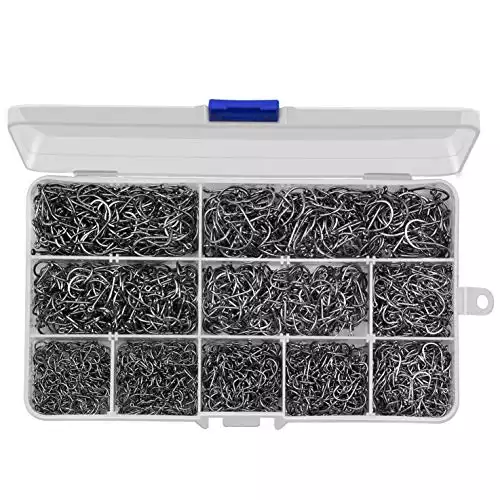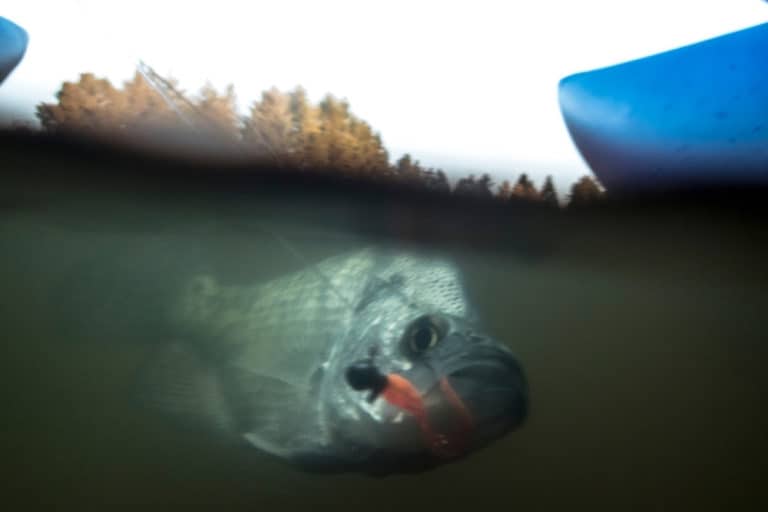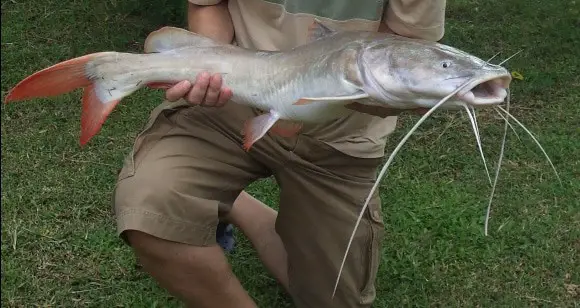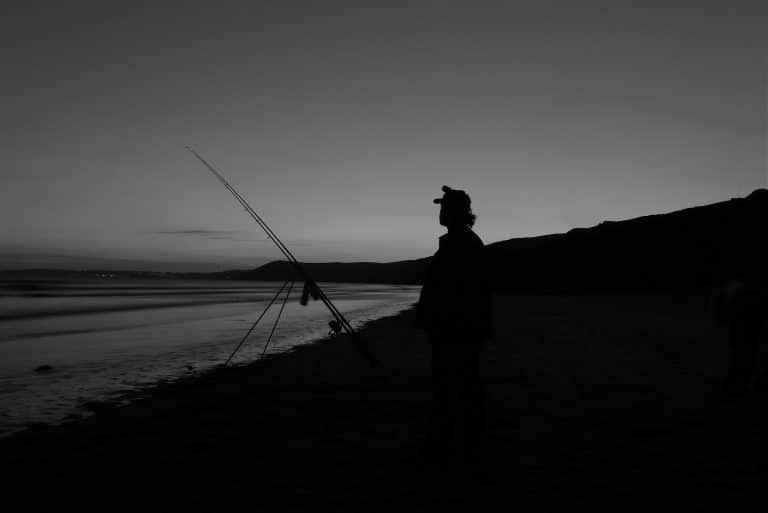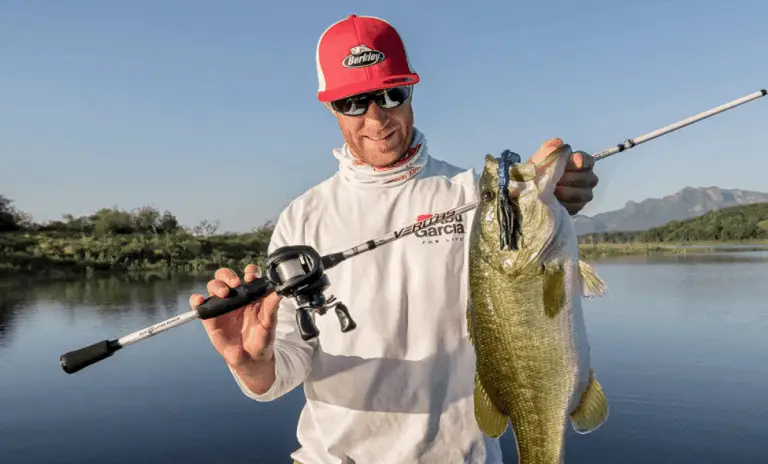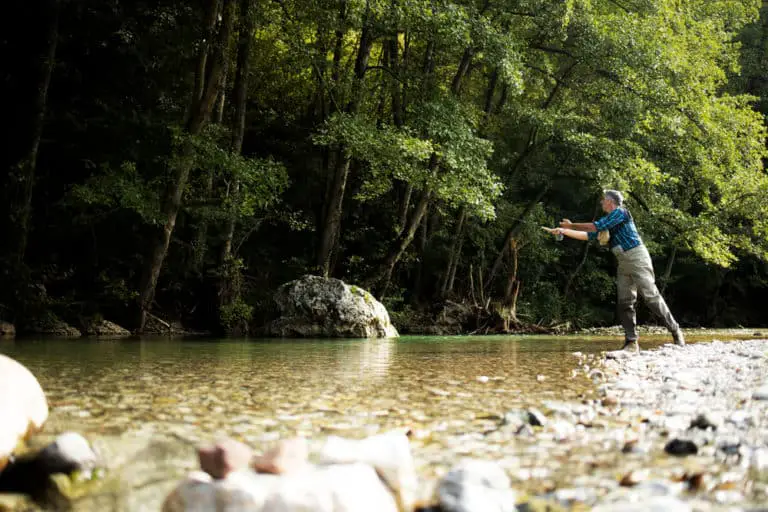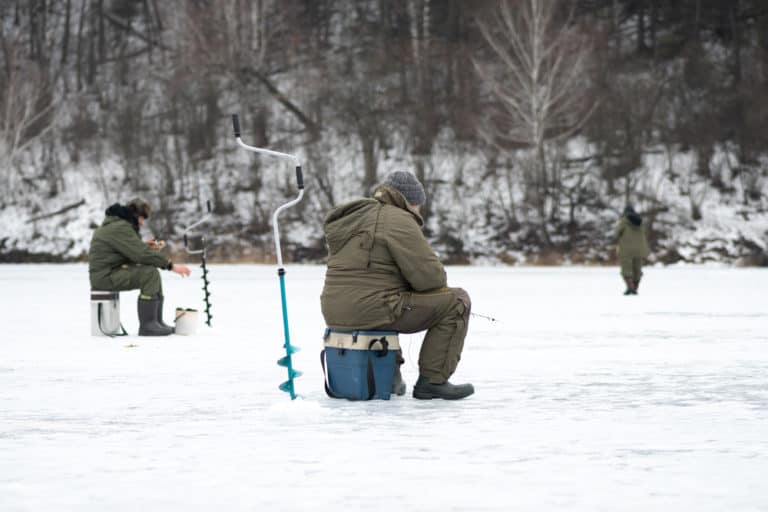Best Fishing Line For Trout In 2024: Reviews & Buyers Guide
There is a saying… Every fisherman is only as good as his fishing line. And it couldn’t be more true.
You can be as skilled as you want, but if your line is likely to snap instantly or if it’s too visible for trout then you’re never going to catch anything!
There is 3 main types of fishing line that an angler should know about, Fluorocarbon, Monofilament, and Braid.
All 3 have different characteristics and uses, but picking the right line for your needs is crucial to helping you land more fish. It would be easy for me to list dozens of fishing lines and not care whether it’s mono, braid or fluorocarbon.
But that’s not going to help anyone. You are looking for the best fishing line for trout, and the best of the best is almost always going to be the Fluorocarbon fishing line for trout fishing. Why?
Trout have exceptionally good eyesight, much better than yours or mine. And trout are also very clever, if they see a fishing line in the water they aren’t going to go anywhere near it and you are going home empty-handed.
Fluorocarbon fishing lines are practically invisible in the water – this is key for trout fishing. You want your lure and bait to look as natural as possible.
Tying your rig onto a bright colored and thick fishing line is going to do you no favors whilst going after trout.
The best fishing line for trout should also sink fast.
Trout like to remain low in the water. Fluoro line will sink fast, whereas lines such as mono, have the tendency to float on the surface of the water.
The Best Fishing Line For Trout – Top 5 Picks
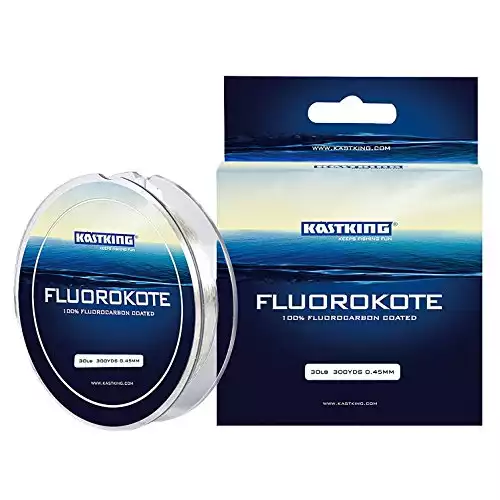 KastKing FluoroKote Fluorocarbon Fishing Line
KastKing FluoroKote Fluorocarbon Fishing Line
Fluorokote is 'invisible' in the water which can greatly increase your chances of getting a bite from trout - who have very sensitive eyesight. You shouldn't have any issue casting around rocks and structures with this fishing line due to its superior strength and abrasion resistance.
Many customer reviews mentioned that the fluorokote is high strength and also has the ability to tie super-strong knots. This is because of the low memory and small diameter of the line. Some people even say that the hook will bend before the knot snaps!
The smaller diameter will allow you to put more line yardage onto your spool so you will have enough to fight larger trout.
Key Features:
- High knot strength
- Low memory
- Small line diameter
- Low Stretch, high strength, superior abrasion resistance
- 100% fluorocarbon coating that reduces the visibility of the line when immersed in water
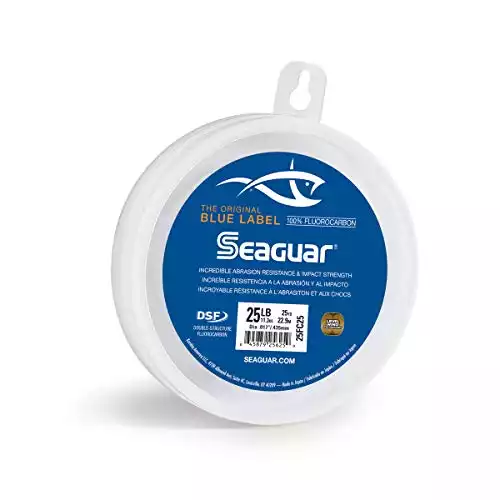 Seaguar Blue Label 100% Fluorocarbon Leader
Seaguar Blue Label 100% Fluorocarbon Leader
Seaguar started producing this fluorocarbon line back in 1971, and it has remained amongst the favourite lines of many trout fisherman since then. It is made from 100% Fluorocarbon leader material and has a very small diameter than others on the market. The small diameter gives it very strong knot strength and allows you to spool more onto your fishing reel.
It has remarkable tensile strength and abrasion resistance, as well as this, it has the ability to absorb shock very well, so it won't suddenly snap on powerful bites.
Fluorocarbon is practically invisible once under the water, and it isn't reflective so trout won't be able to see it as well as a monofilament line.
Key Features:
- Practically invisible and non-reflective
- Incredibly strong
- Small diameter
- Made of 100% fluorocarbon
- Incredible impact and abrasion resistance
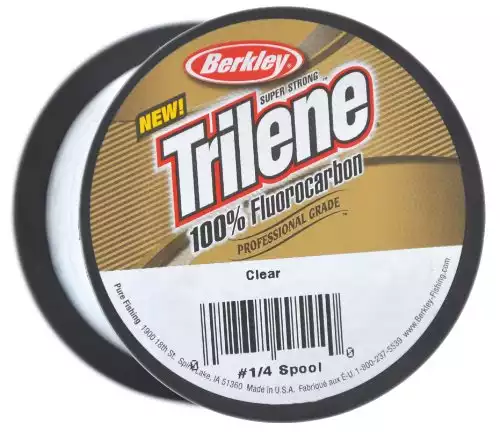 Berkley Trilene Fluorocarbon Clear Line
Berkley Trilene Fluorocarbon Clear Line
Super-strong, shock-resistant Trilene is 100% Fluorocarbon Professional Grade Line. It offers the precision and tough-as-nails fighting power you need for landing monster trout. Plus, it's extra-tough and abrasion-resistant to handle brush, rocks, and other obstacles that you may be casting around.
Key Features:
- 100% Fluorocarbon construction is nearly invisible
- Provide top abrasion-resistance and knot strength
- Fast-sinking with greater line density for high sensitivity
- 100% PVDF formula specially processed for optimal impact strength
- Clear color
- Your choice of break strength
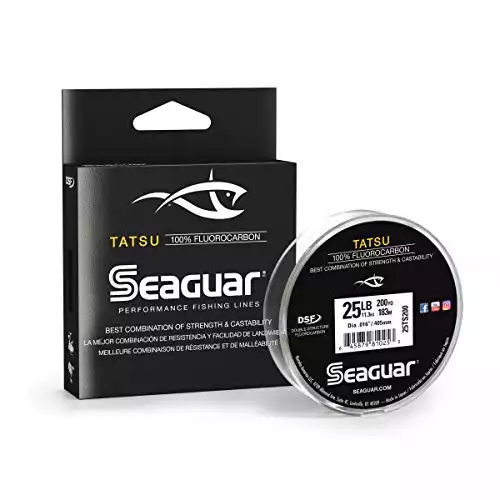 Seaguar TATSU 200-Yards Fluorocarbon Fishing Line
Seaguar TATSU 200-Yards Fluorocarbon Fishing Line
Tatsu is Japenese for dragon... and Seaguar has really embodied the strength of a dragon whilst producing this fluorocarbon fishing line. It's one of the most premium fluoro lines on the market.
The increased price tag is the main reason we never gave it our best pick, but if you are only using small yardages at a time as a leader line, then this is the perfect fluoro fishing line for trout.
The Tatsu is a state-of-the-art double structure fluorocarbon fishing line which is 2 100% fluorocarbon resins fused together to produce a single main-line. This drastically increases the tensile strength, abrasion resistance, and also increases sensitivity.
Key Features:
- Crafted from the highest quality material
- Suitable for Salt and Freshwater
- Made in Japan
- Low Stretch
- High knot strength
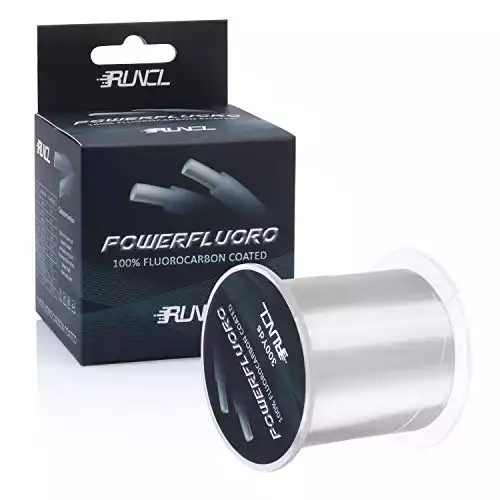 RUNCL PowerFluoro Fishing Line, 100% Fluorocarbon Coated Fishing Line
RUNCL PowerFluoro Fishing Line, 100% Fluorocarbon Coated Fishing Line
The PowerFluoro is constructed of a 100% fluorocarbon outer coating with copolymer core, the fluorocarbon coating produces outstanding shock strength, abrasion resistance and knot strength to deliver the ultimate in impact strength, and added copolymer that adds flexibility, knot strength, and reduced memory.
Features high-density construction with non-absorbency (it won't freeze, which makes it great for ice fishing), helps to sink faster than monofilament of the same diameter, allows lures to rapidly reach the desired trolling depth to catch the fish.
The fluorocarbon's light-refractive index is nearly identical to water, makes line virtually invisible to fish in the water for a stealthy presentation, which can be used in any water conditions.
Key Features:
- Virtually invisible in the water
- Hybrid line construction
- Fast sinking
- High tensile and knot strength
- Great abrasion resistance
Best Fishing Line For Trout Buyers Guide & FAQ
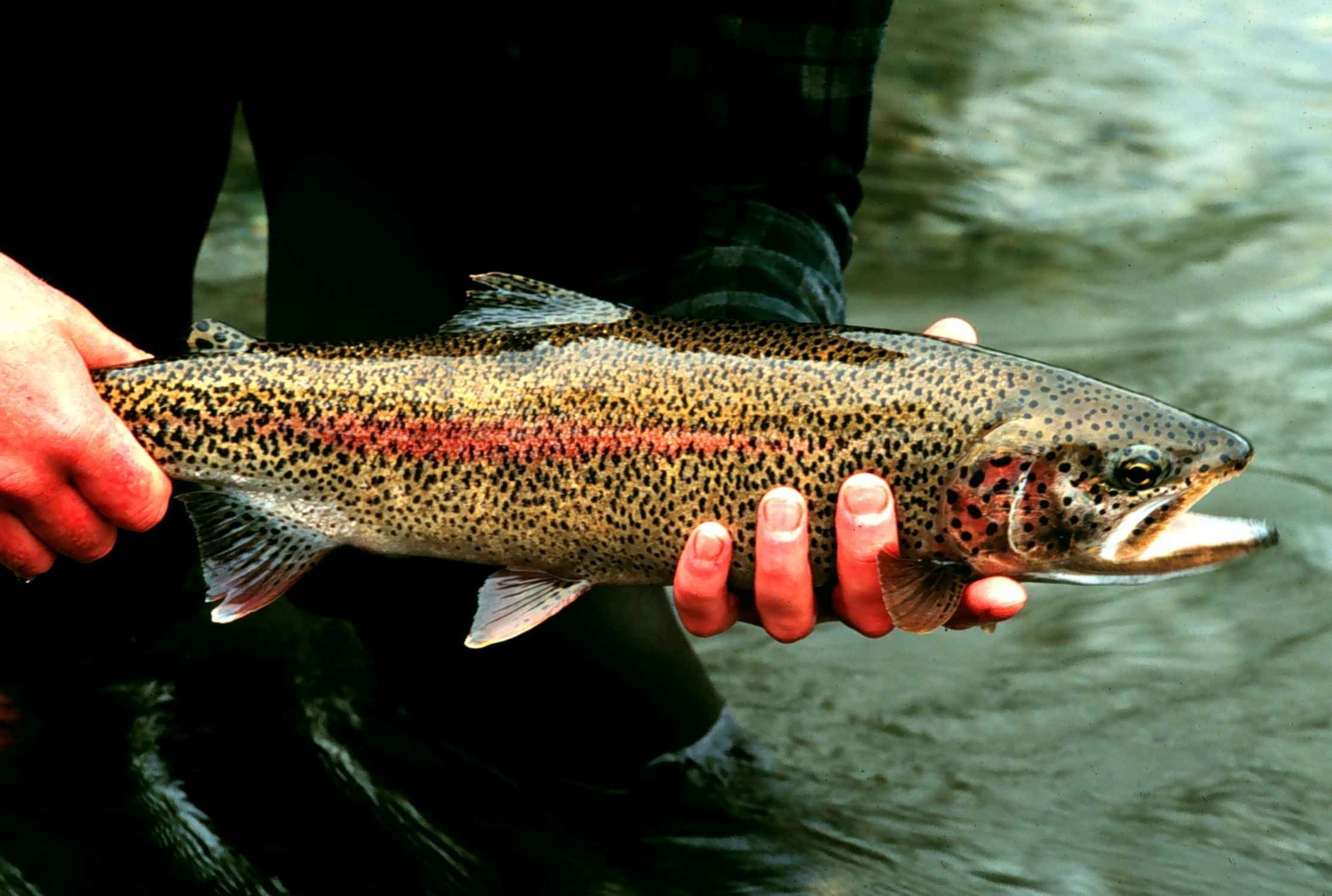
Different Types Of Fishing Line For Trout
Fluorocarbon Line For Trout
Fluorocarbon is the number 1 line we would recommend for catching trout. That’s why every line on our list is fluoro.
Trout have great eyesight- better than humans! This means that it’s easy for them to see the line and avoid it.
Fluorocarbon is almost invisible and therefore great for catching trout. It’s also really strong and doesn’t stretch too much so you’ll easily be able to feel the bites on the line.
Monofilament Line For Trout
Monofilament, or mono, is an extremely popular and versatile type of fishing line.
It’s easy to use, available in a variety of different weights and colors, and is fairly cheap.
However, it tangles easily and can break, so make sure you check and replace the line regularly so you don’t end up losing your fish!
Monofilament can be used for casting, trolling, and still fishing with bait. You’ll need to check the strength (test) of the line and you’d probably want around 2-4 pound test for still fishing trout and a 6-8 pound test when trolling.
If you don’t want to pay the cost of a Fluoro line, mono is the next best option if purchased in clear color. Many people use a monoline, with a Fluoro leader on the end, so the trout only see the Fluoro line.
Braided Line For Trout
Braided lines are great for fishing bass and walleye, but trout fishers are divided. It’s good because it’s extremely sensitive so you can definitely tell if you’ve caught something, and it’s really thin and strong, so it cuts through the water without causing much disturbance, which makes it great for trolling.
However, it’s not as good for shallow, clear water as it’s easily visible for trout. Therefore, make sure that you’re only using braided lines in the right situation. If you do try it, tie the bait on with a Fluoro leader instead for better results.
Different Species Of Trout
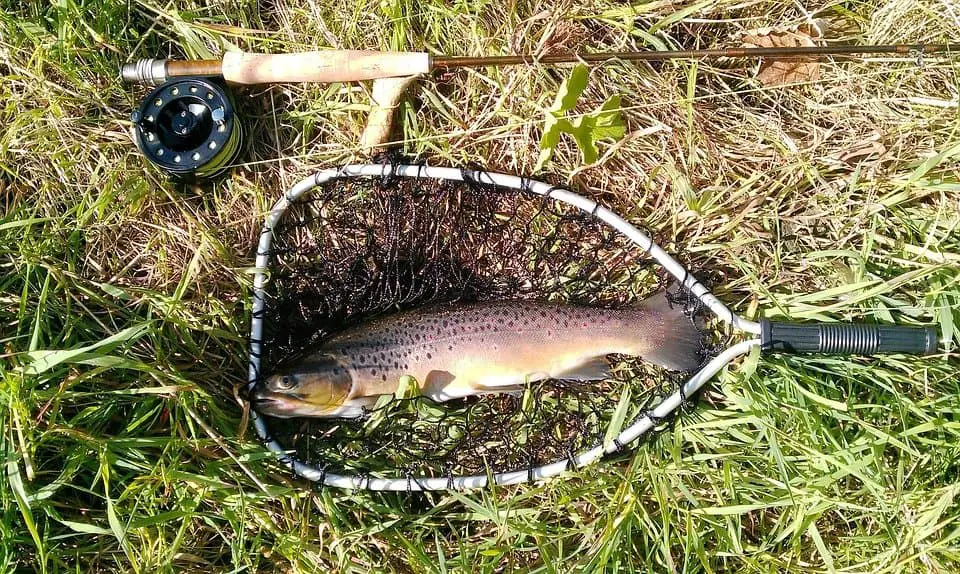
Rainbow Trout
These fabulous fish are the most commonly fished trout in America. They’re native to the Sierra Nevada, but they’re also found in rivers and lakes all over the USA.
If you’re fishing for rainbow trout you should try a fluorocarbon or monofilament line. They’re feisty and jump around when they’ve been hooked.
Brook Trout
Brook trout (or speckled trout) aren’t as colorful as their rainbow cousins, but you can still easily tell them from their black lower fins and white leading edge.
They’re also smaller than rainbow trout: rainbows are 11-18 inches and brooks are usually eight inches at most. Brook trout tend to live in cooler waters, and you can use any kind of fishing line for them, but as always Fluoro is recommended.
Brown Trout
Brown trout might be the plainest to look at, but they do still have red, orange, and black spots on their sides.
Brown trout are also much larger than brook or rainbow trout and can grow up to 39 inches. They’re found in the sea unless they’re spawning and they’re from Western Europe.
If you’re looking to catch some brown trout you’ll need a heavy test line, ideally made of fluorocarbon or copolymer, and some luck because they’re the most suspicious and hardest to catch!
Best Time To Fish For Trout
If you’re looking to catch trout and like to get the biggest ones possible, try going in the late spring. If you’re less concerned about size, it is possible to go trout fishing at any time of year.
Lakes and rivers are usually stocked with trout in early winter, and they’ll be most active when the water temperature is between 39-67 Fahrenheit.
Although it might be tempting to go fishing on sunnier days (and don’t forget to bring your sun screen and sunglasses) remember that trout’s eyes are really good so it’s best to either go fishing when it’s cloudy, dusk or you can try fishing under a tree in the shade.
What Is Line Strength?
Line strength is pretty much what it sounds like. If you’re catching big fish that thrash around a lot, you’ll want something that won’t snap and lose the fish and potentially recoil onto you.
Check the line test charts to see what the best option is for you, and always stay away from sharp rocks or anything your line might get tangled in!
What Is Fishing Line Diameter?
Line diameter is also fairly straightforward: it’s the width of the fishing line. If you can find something with a smaller diameter it’s harder for the fish to spot and avoid, plus you can fit more on your reel and it will sink faster because there’s less resistance. But, as before, if you’ve got a thin line make sure it’s still strong and durable.
What Is Line Stretch?
Line stretch is again, pretty much what it sounds like. Some lines will extend a bit when ‘under stress’- usually, they’ve got something caught! If your line is ‘high stretch’ it’ll extend and if it’s ‘low stretch’ it’ll snap.
This is also called ‘line forgiveness’. You’ll want a certain amount of stretch in your line, but not so much that you can’t actually tell when a fish has been caught.
Fishing Line Color
The idea of line color is to keep it from being spotted, as fish will tend to avoid anything that’s too obvious.
In clear water the least obvious line will be transparent, and in murkier water, you’ll want something either blue or green. The exception is if you’re ice fishing, where a bright line is much more visible to the person fishing and they can check movement and look out for bites.
Line Durability
It’s good to have a durable line. As much as we try to work out how heavy the fish will be, and try to avoid anything it might get tangled in (both in and out of the water) there’s inevitably going to be some damage from time to time.
Finding a durable line will mean it’ll last longer and it’s less likely to snap at inopportune moments.
Best Line For Trout – FAQs
What is the best line weight for trout fishing?
This will depend on the type of trout you’re fishing for. If you’re new to angling, try to find a line weight between 4-6. Some people prefer lighter lines because it makes small fish (like brook trout) more fun to catch.
Is fluorocarbon line good for trout fishing?
Yes! It’ll depend slightly on the type of trout you’re fishing for and where you’re fishing, but fluorocarbon fishing lines can be great for trout fishing. It’s usually invisible so the fish won’t see it, and it’s strong enough to stand several trout bites.
What size hooks for trout fishing?
You’ll want to get the right size hooks for trout, as messing this up might mean you miss out on some good fish! It’s best to try and find the smallest hook possible for the size of trout you are going after. We would recommend trying to get a size 6-10, with 6 as the absolute largest.
How long should a trout rod be?
Usually, between 6-8 foot. Some people prefer to go all the way to nine, but this is less common. You’ll need to consider where you’re going to be fishing and how much control you want: if you have a longer rod you can cast further and control hooked fish better, but it’s less accurate. If you’re going to be in low streams try something closer to 6-7 foot.
Can trout see fishing line?
Yes! Trout have really good eyesight, so you’ll need to take that into consideration when buying your line. You’ll usually want to get a transparent line for clear water so the trout cannot see it, and a blue or green line is better for murky water.
What time are trout most active?
Trout are most active when they’re feeding. Unfortunately, they eat insects, so it’s likely you’ll get some bug bites as well as fish bites! If you’re fishing in the summer try to go in the early morning and late evening. If you’re fishing in the spring or autumn, head out just before dusk.
Should leaders be stronger than the main line?
Yes. Your leader should be stronger (and thicker) than your main line if you are fishing for trout. Other fish will not need strong leaders, but if you’re fishing for trout they’re better. The length of the leader is also important: if you’re throwing lures, try a shorter leader so you can cast without it getting in the way.
What color do trout see best?
Trout’s eyesight is actually better than humans: people have three different color receptors and trout have four.
Their eyesight also changes over their lives: young trout find bright, vivid colors interesting to look at but older trout get scared away. Trout see blue very well, so this might not be the best color if you’re looking to catch one.
Best Trout Fishing Line – Conclusion
Trout is one of the most sought-after fish, not only in the US but also in the world.
They are tough fish to catch, they are most active at certain times of the day and hang out in different types of water and depths. But being able to successfully track down one of these majestic fish and land it in your net makes the experience all the more rewarding.
Having the right fishing equipment is always important. But having the best fishing line for trout is especially crucial.
Trout have exceptional eyesight. Their ability to watch their prey closely and actually think before they strike put them off unnatural settings. If your fishing line is too visible, the trout won’t strike and you’ll be left empty-handed.
We would always recommend using a Fluorocarbon fishing line for trout. It’s almost invisible in the water, so the trout won’t be suspicious of any flies or lures you are using.
If you don’t want to pay for Fluoro, then a monofilament fishing line for trout will be the next best option. Just make sure it’s clear.
Other Fishing Gear You Might Need:
- Mono Fishing Line
- Braided Fishing Line
- Ultralight Rod
- Surf Rod
- Fishing Backpack
- Fishing Reel
- Fishing Headlamp
- Fishing Lures
- Fishing Rain gear
- Fishing Sunglasses
- Fishing Kayak
- Tandem Fishing Kayak
Related Fishing Posts:

